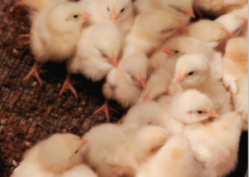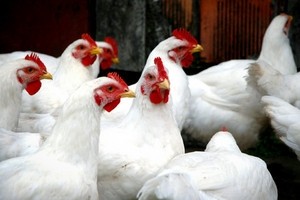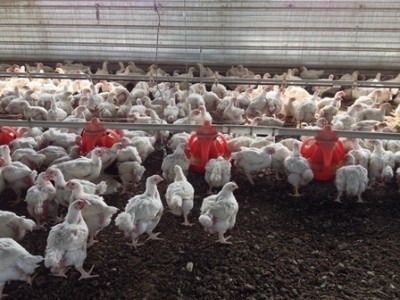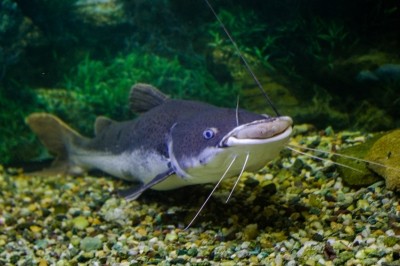Bacteria-derived phytases support broiler growth, replace inorganic phosphate use

An international team of researchers based at the Federal University of Vicosa in Brazil examined the use of two bacteria-derived phytases in the diets of recently hatched broiler chickens. The group published its results in the journal of Animal Feed Science and Technology.
“The objective of this study was to determine the efficacy as well as the equivalency values relative to P from dicalcium phosphate of a new Citrobacter braakii-derived phytase (expressed in A. oryzae) and a genetically-modified Escherichia coli phytase (expressed in Trichoderma reseii) to partially reduce the addition of dicalcium phosphate in the diets of broiler chickens from 1 to 21 days of age,” said the researchers.
The team found that phytases derived from by Citrobacter braakii and Escherichia coli can be used to partially replace the use of additive dicalcium phosphate as a phosphorus (P) supplement.
“The supplementation of 500, 1,000, and 2,000 phytase units of Citrobacter braakii per kg were determined to be equivalent to the average addition of 0.625, 1.091, and 2.024 g of inorganic phosphorus from dicalcium phosphate per kg in broiler diets, respectively,” they said. “The supplementation of 250, 500, and 1,000 phytase units of Escherichia coli per kg were determined to be equivalent to the average addition of 0.763, 1.307, and 2.395 g of inorganic phosphorus from dicalcium phosphate per kg in broiler diets, respectively.”
Why bacteria-derived phytases?
Inorganic phosphorus additives like dicalcium phosphate are used in poultry production to help meet nutritional requirements for the birds, said the researchers. However, the use adds expense and increases phosphorus excretion – which has a negative environmental effect.
But exogenous phytase can be used to improve the use of P in non-ruminant production animals, they said. Phytases also offers a cheaper way to meet a bird's dietary phosphorus needs.
There are several varieties of phytase available for animal producers, including those derived from fungus or the bacteria Escherichia coli, they said.
However, phytases stemming from varied sources may have different characteristics, said the researchers. As those individual elements can alter P release, additional studies are needed to establish the efficacy of new phytases.
Current research is lacking regarding the new strains of bacteria-derived phytases explored in the research, they said. More information regarding how they perform at different amounts and for a longer period of time is needed to understand their efficacy.
“Past studies just offered experimental diets to birds from 8 to 21 days of age,” said the researchers. “Additionally, they evaluated two or less levels of phytase units (500 or 1000 FYT/kg). Thus, studies evaluating the efficacy of both enzymes with more and different levels of phytase units as well as their equivalency relative to P from DCP in birds fed the experimental diets from 1 to 21 days of age are still needed.”
Study details
In the trial, 2,100 male broiler chickens were given one of 10 diets for a period 21 days, said the researchers. The basal diet included 1.8g per kg non-phytate phosphorus and 9g per kg of calcium.
Test diets included a range of dicalcium phosphate to give 0.9, 1.8, or 2.7g per kg of additional phosphorus; the basal diet with 500, 1,000 or 2,000 phytase units of commercial Citrobacter braakii (CBP) per kg; or the basal diet with 250, 500 or 1,000 phytase units of commercial Escherichia coli (ECP) per kg.
Birds were evaluated for feed intake (FI), weight gain (WG) and for the feed to gain ratio, they said. Four birds per diet were harvested on day 21 and tibia samples were collected to evaluate ash and P levels.
Results
The two alternative sources of dietary phosphorus were found to support bird feed intake and weight gain, while replacing some of the inorganic phosphorus use, said the researchers.
Adding additional amounts of dicalcium phosphate improved feed intake by 52, 71 and 80% linearly, they said. But weight gain was boosted for only the lower two supplement levels and depressed by the highest amount, and both tibia ash weight and tibia phosphorus levels were improved as dicalcium phosphate was added to the diets.
Supplemental Citrobacter braakii-derived phytase improved feed intake, weight gain, and tibia ash weight and phosphorus in a linear fashion, they said. Birds getting the largest supplement saw a 65% boost in feed intake and weight gain, a 133% improvement in tibia ask weight and a 273% gain in tibia phosphorus.
Birds getting additive Escherichia coli-derived phytase also saw linear improvement across the categories as supplement amounts were increased, they said. Birds getting the largest amount of the additive had a 70% increase in feed intake, a 76% growth in weight gain, 164% boost to tibia ash weight and a 330% increase in tibia phosphorus.
Source: Animal Feed Science and Technology
Title: Efficacy and phosphorus equivalency values of two bacterial phytases (Escherichia coli and Citrobacter braakii) allow the partial reduction of dicalcium phosphate added to the diets of broiler chickens from 1 to 21 days of age
DOI: 10.1016/j.anifeedsci.2016.09.008
Authors: V. Ribeiro, S. Salguero, G. Gomes, V. Barros, D. Silva, S. Barreto, H. Rostagno, M. Hannas, L. Albino













